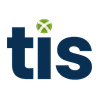This article expounds on TIS’ vision for a globally optimized enterprise payments process. After analyzing the primary payment challenges that large enterprises are commonly confronted with, we demonstrate how a reimagined technology stack can help companies achieve maximum automation and control across all their systems, entities, and banks. This article concludes by showcasing how TIS’ Enterprise Payments Optimization (EPO) capabilities are uniquely equipped to help enterprises manage global payments in today’s fast-paced and highly-digital environment.
What does “enterprise payments” mean to you?
As a business employee or executive, what image does the term “enterprise payments” bring to mind?
For personnel who operate in the field, enterprise payments may conjure up visions of customers purchasing products at physical storefronts, over the phone, or via online e-commerce sites. Alternatively, those in accounting might view enterprise payments as a string of invoices, ledgers, and bank account statements. Employees in human resources will likely envision payroll and pension payments, and IT departments will consider the systems and technologies that support their company’s digital payment infrastructures.
Across other areas like treasury, the c-suite, and compliance, employee perspectives would probably vary in a similar fashion.
The point being?
Although each employee’s perspective of enterprise payments is different, all of their viewpoints are accurate and important.
In reality, managing enterprise payments is a complex process that involves dozens of steps, a myriad of technology platforms, and numerous stakeholders both inside and outside of the company. But regardless of the specific role that any department or employee has in managing enterprise payments, the point is that it takes all of them, operating together, to execute the associated workflows.
For any enterprise to effectively function, every stakeholder involved in the payment process, from AP and AR to accounting, HR, legal, and treasury, must have access to certain pieces of financial data and technology. In a digital world, having this data readily available across the enterprise’s back-office is essential in order for each group to optimally perform the payments-related responsibilities they are entrusted with.
However, managing this global web of payments data and software is much easier said than done.
Why are enterprise payments inherently complex?
As today’s practitioners know from experience, there are layers of complexity deeply embedded within many enterprises’ payment workflows, particularly from a technology standpoint, that have gradually manifested over time.
Every day, global enterprises collect millions of inbound payments from their customers, while simultaneously generating massive volumes of outbound payments to suppliers, vendors, and employees. To complicate matters, these inbound and outbound payments can look very different across the organization, especially for those that operate in numerous countries, markets, and industry verticals. Some payments may be completed with cards, others by check, and still more with physical cash or account-to-account options like bank wires, ACH, and SEPA. Payments in different currencies such as dollars, euros, pounds, and yen should also be expected. And finally, enterprises with localized business units may use a separate set of banks and software systems to manage payments across each location, which adds significant complexity each time a new subsidiary or branch is created.
When grouped together, all of these disparate workflows and systems are what comprise the enterprise payment process. And as already noted, managing this global web of technology and information can be incredibly complicated, especially as enterprises expand into new markets and as new technology systems and payment protocols are added to company infrastructures over time.
Ultimately, the expansion that any successful enterprise undergoes will (or should) inevitably lead to the same question surrounding payments:
What’s the fastest and most effective way for every department with a stake in the payment process to access the data and tools they need, across all operating units, in order to optimally perform?
Why is a reimagined approach to enterprise payments necessary?
In recent years, the enterprise payments landscape has evolved very quickly. Looking only at outbound payments, consider your enterprise’s use of checks, cards, and various account-to-account options like ACH or SEPA. Think about how these options have evolved over the past decade, and consider how they will change more in the coming years to accommodate new payment preferences and standards such as Real-Time or Instant Payments. And finally, for these changes to be successfully adopted and leveraged by your organization, ask yourself what the internal requirements would be.
What technology solutions would be impacted, and which departments would be affected the most?
If your enterprise is like most others, its core payment workflows are managed by a combination of banking systems and back-office cloud platforms. This means that Enterprise Payment Optimization (EPO) will involve streamlining the connections that exist between these systems. As a common example, consider how most enterprises use ERPs, a TMS, or HR and AP systems to transmit payment files to their banks. Various bank portals and other specialty financial platforms, such as for FX trading or investments, may be used as well. And as touched on above, each of an enterprise’s regional entities and subsidiaries may have their own sets of these solutions, along with their own variety of banking partners and 3rd party connections.
But while each of these individual systems or networks may function well enough on their own, how well is information flowing between different departments or entirely separate business units and entities?
The abbreviated response we at TIS are most commonly confronted with is “not well.”
Often, these siloed technology stacks and legacy systems are the unintended result of sustained business growth. In some cases, it’s almost natural for them to occur. However, with today’s speed of change in commerce and technology, it is no longer an option to leave each of these functions, systems, and geographies separate. Silos reduce communication and visibility, and they ultimately stifle growth. And in the world of payments, a lack of visibility and automation will directly impact liquidity, profitability, and exposure to risk – including the risk of cybercrime and fraud – across the entire enterprise.
But then, for organizations that find themselves in this situation and that need to grow more mature, what does (or should) the path to optimization look like?
What should modern Enterprise Payment Optimization (EPO) look like?
In a perfect world, end-to-end organizational visibility for payments would be achieved through the complete centralization and integration of all a company’s systems, banking partners, and business entities with one another. In other words, every system used by an enterprise would connect directly to every other system, and 100% real-time information visibility would be a reality.
Of course, this vision is unrealistic for enterprises today.
Instead, given the fragmented ERP and systems landscape that often exists across the back-office, a holistic view of payments information is most easily achieved by implementing an EPO “orchestration” layer of software, data, and support. This EPO layer sits above an enterprise’s technology stack and manages connectivity across all their back-office, banking, and 3rd party platforms. And by integrating with each platform in an enterprise’s technology stack, the EPO layer can become the sole channel through which all company payments are managed, controlled, and analyzed.
As data and instructions from ERPs and back-office systems pass through the associated EPO platform, they can be quickly transferred to the appropriate end recipient – be it a bank, 3rd party solution, or other enterprise within the network. Subsequent bank statements and reports can also be transmitted from the bank through an EPO platform to the various internal departments and systems at the company where payment instructions are originating from. In this way, the information stored on an EPO platform serves as the single source of truth for payments data across all corporate departments, subsidiaries, and geographies, and it prevents enterprises and their IT departments from having to manage a tangled mess of disparate back-office connections.
As an extension of the above benefits, the EPO orchestration layer also helps enterprises by allowing them to leverage the global payments data that is consolidated within the EPO platform over time. For example, we at TIS have been collecting and analyzing payments data from almost 200 enterprises for over 11 years, and our EPO platform can be connected to 11,000 banks across 85 countries. Now, having averaged 75% year-over-year growth since inception and with 25,000 active users, TIS’ enterprise clients can use the vast repository of global payments data held within our platform to benchmark their own operational performance, identify processes or systems that represent gaps, and then eliminate those gaps through the strategic deployment of our EPO solution. This global community of multi-tenant data can also be leveraged by our customers to optimize other functions associated with payment workflows, such as security and compliance. In this way, TIS supports a multi-tiered EPO orchestration layer for enterprises by offering our payments platform alongside a vast library of payments data and decades of acquired industry experience.
As a final point, it’s important to highlight that as new enterprises, software vendors, and banks are added to TIS’ EPO network over time, customers receive API access to a community of best-of-breed products and services. This is a massive advantage when it comes to performing functions like cash forecasting, as all the payments and liquidity data needed for this task is already housed within TIS’ EPO platform. And since our EPO network is connected to a variety of best-of-breed forecasting solutions, enterprise data can be quickly and easily transmitted to these platforms for expedited analysis.
In this way, once an EPO orchestration layer has been adopted and integrated across an enterprise, the ensuing benefits can be felt immediately by all participants in the payments process. Company-wide visibility to global cash balances drastically improves, payments compliance and security features are standardized across all departments, and the enterprise’s overall payments execution workflows become more automated and controlled. In practice, this means that authorized employees can control, analyze, and share payments data across the entire company with a few clicks of a button, instead of having to undergo extensive manual effort or complex data-gathering techniques.
These capabilities are exactly what TIS offers through our Enterprise Payments Optimization platform.[/vc_column_text][/vc_column][/vc_row][vc_row][vc_column][vc_empty_space height=”128px”][dhsv_vc_template_element template_id=”2368″][vc_empty_space height=”128px”][/vc_column][/vc_row][vc_row][vc_column][vc_column_text]
What can you expect from TIS’ global Enterprise Payment Optimization capabilities?
TIS’ Enterprise Payment Optimization platform is a global, multi-channel and multi-bank connectivity ecosystem that streamlines and automates the processing of a company’s payments across all their global entities and systems. By sitting above an enterprise technology stack and connecting with all their internal, banking, and 3rd party solutions, TIS effectively breaks down department and geographic silos to allow 360-degree payments visibility and control. To date, the ~200 organizations that have integrated TIS with their global ERPs, TMSs, and banking landscape have achieved near-100% real-time transparency into their payments and liquidity. This has benefitted a broad variety of internal stakeholders and has also enabled them to access information through their platform of choice, since the data that passes through TIS is always delivered back to the originating systems.
This systematically controlled payments workflow is managed by TIS for both inbound balance information and outbound payments, and data can be delivered from any back-office system via APIs, direct plug-ins, or agents for transmission to banks and 3rd parties. No matter where you operate, TIS provides global connectivity by creating and maintaining compatibility with all required formats and partnerships, so that organizations can connect with any bank partner in the world.
Because of the deep connections that TIS maintains with internal systems such as ERPs or TMSs, external banks, and 3rd party vendors / service providers, the process of managing payments is simplified for every internal stakeholder. C-suite executives, treasury, accounting, AP, legal, HR, and other key personnel can access whatever financial data they need, exactly when they need it. And by automating this flow of information for both inbound and outbound payments, TIS provides the control and flexibility that enterprises need to function at their highest level.
Finally, with the global payments data we have amassed and the decades of experience our team has in orchestrating enterprise payments, we are uniquely equipped to help enterprises accurately benchmark their payments performance and provide tailored advice on how to optimize, grow, and mature. When combined with our innovative EPO technology, this rich data and deep experience is what enables us to continually provide industry-leading payment solutions and support to our enterprise customers.
In the digital world of enterprise payments, TIS is here to help you reimagine and simplify.



